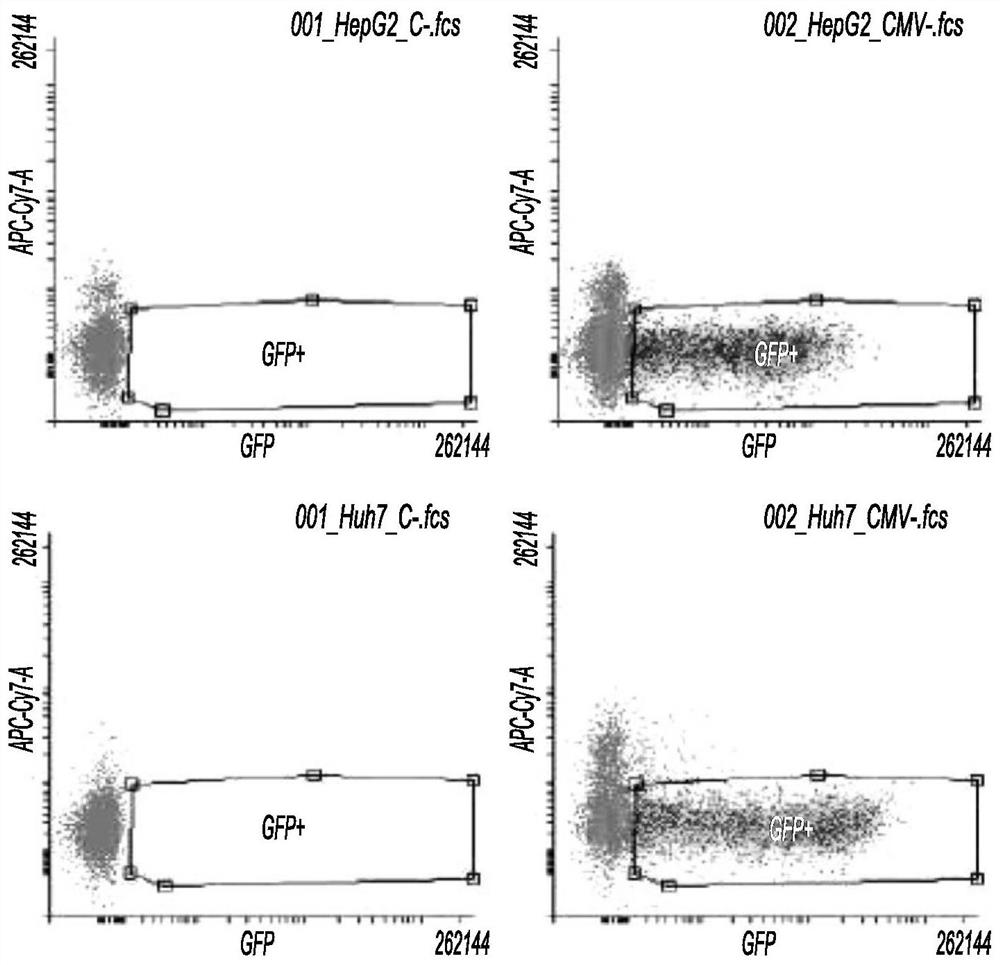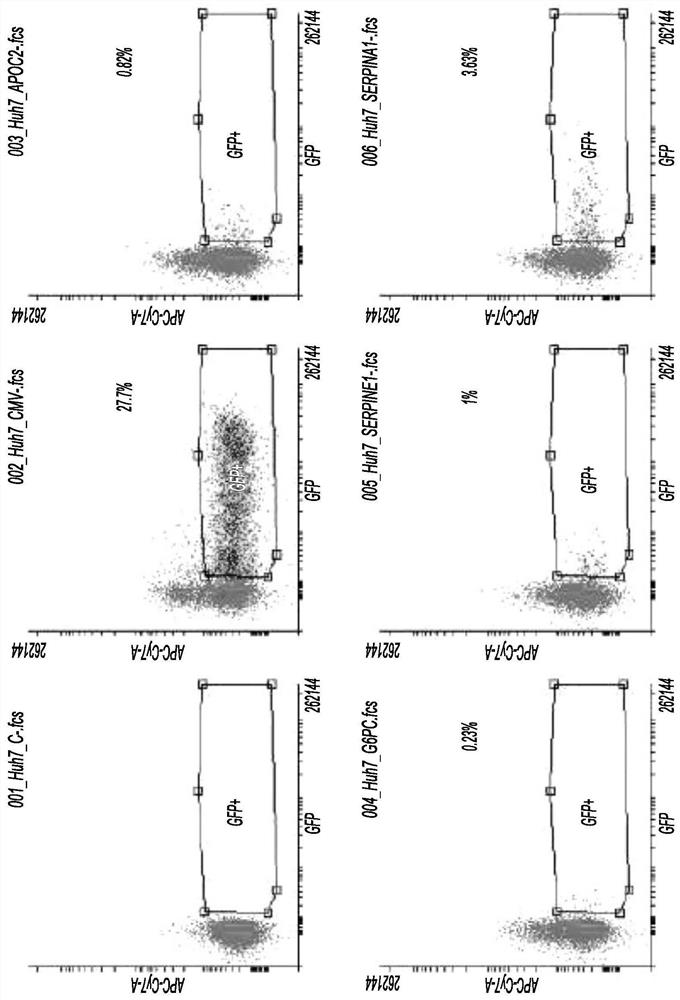Liver-specific viral promoters and methods of using the same
A promoter and a technology for synthesizing polynucleotides, which are applied to liver-specific viral promoters and the field of their use, and can solve problems such as reduced curative effect
- Summary
- Abstract
- Description
- Claims
- Application Information
AI Technical Summary
Problems solved by technology
Method used
Image
Examples
Embodiment 1
[0231] Example 1 - Determination of constitutive promoter elements
[0232] A meta-analysis of hepatocyte datasets was performed to identify candidate genes for cis-element selection. Microarray and NGS datasets and scientific literature were consulted to identify genes expressed at very high levels in target cell types.
Embodiment 2
[0233] Example 2 - Selection of cis-regulatory elements contained in a synthetic promoter library in hepatocytes
[0234] Once a suitable liver-associated gene set has been identified, the promoter regions of the selected genes are next analyzed to identify cis-regulatory elements (CREs) and other features in the selected promoters responsible for transcriptional regulation. Three methods were used to determine the cis-elements to be incorporated into the synthetic promoter library construction, resulting in the selection of at least SEQ ID NO: 1-19.
[0235] The identified cis-elements were used separately to create different libraries. Relevant compound elements regulating liver-specific genes were identified through the Liver-Specific Gene Promoter Database (LSGPD) and literature searches. These composite elements were then used to design new synthetic promoters.
Embodiment 3
[0236] Example 3 - Creation of Liver-Specific Synthetic Promoter Library Screening Vectors
[0237] The screening vector was based on the pUC19 backbone (synthetic promoter library+core promoter elements+GFP). Synthetic promoter libraries were cloned upstream of the minimal promoter sequence. This sequence contains elements necessary for the recruitment of the RNA polymerase II complex and contains the transcription initiation site. The minimal promoter sequence revealed basal transcriptional activity and the library sequence cloned upstream was designed to enhance its activity and specificity.
PUM
 Login to View More
Login to View More Abstract
Description
Claims
Application Information
 Login to View More
Login to View More - R&D
- Intellectual Property
- Life Sciences
- Materials
- Tech Scout
- Unparalleled Data Quality
- Higher Quality Content
- 60% Fewer Hallucinations
Browse by: Latest US Patents, China's latest patents, Technical Efficacy Thesaurus, Application Domain, Technology Topic, Popular Technical Reports.
© 2025 PatSnap. All rights reserved.Legal|Privacy policy|Modern Slavery Act Transparency Statement|Sitemap|About US| Contact US: help@patsnap.com



